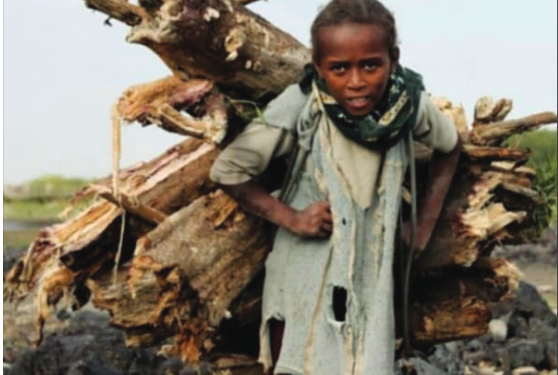The International Labour Organization (ILO), defines child labour as “work that deprives children (below 18) of their childhood, potential and dignity,and that is harmful to their physical and/or mental development.”
Such work, it says, is mentally, or morally dangerous and harmful to children; and/or interferes with their schooling by:
- depriving them of the opportunity to attend school
- obliging them to leave school prematurely
- requiring them to attempt to combine school attendance with excessively long and heavy work.
According to UNICEF, the number of children in child labour has risen to 160 million worldwide -an increase of 8.4 million children in the last four years. 63 million girls and 97 million boys were in child labour globally at the beginning of 2020, accounting for almost 1 in 10 of all children worldwide.
“This report warns that global progress to end child labour has stalled for the first time in 20 years. The number of children aged 5 to 17 years in hazardous work – defined as work that is likely to harm their health, safety or morals – has risen by 6.5 million to 79 million since 2016.”
In sub-Saharan Africa, notes the report, population growth, extreme poverty, and inadequate social protection measures have led to an additional 16.6 million children in child labour over the past four years.
“Additional economic shocks and school closures caused by COVID-19 mean that children already in child labour may be working longer hours or under worsening conditions, while many more may be forced into the worst forms of child labour due to job and income losses among vulnerable families.
The report warns that globally 9 million additional children are at risk of being pushed into child labour by the end of 2022 as a result of the pandemic.
According to the United Nations, not all work done by children is classified as child labour or targeted as child labour . Children or adolescents’ participation in work that does not affect their health and personal development or interfere with their schooling is generally regarded as being something positive.
The Case of Cameroon
Cameroon, a sub-Saharan African country, has been battling to curb child labor various ways in the midst of various crises.
But the on-going socio-political crisis, in the Northwest & Southwest regions of Cameroon, which erupted in 2016, seems to be worsening the child labor situation. This crisis has left hundreds of thousands people unemployed and internally displaced. As such many parents are left with no choice than to allow their underage children hawk in the streets, or do other menial jobs despite the risks of being kidnapped, sexually molested, raped, tortured or even killed.
Cameroon Labor Code(Section 86 (1) says, “No child shall be employed in an enterprise even as an apprentice before the age of fourteen years, except as otherwise authorized by an order of the Minister of Labour…” But many children now engaged in child labor is a violation of this law.
The ILO says the worst forms of child labor include child hawking, debt bondage and children in armed conflict.
In the Southwest region of Cameroon, for example, child hawkers during this crisis period are common, especially during long holidays. Francis, 11 year-old now residing in Buea for safety reasons, was sent away by his parents in Muyuka as a result of rising insecurity and violence provoked by the Anglophone crisis. In Buea, Francis is living with his aunt, a low income earner who has introduced him to the hawking boiled groundnuts. The child says the job is very stressful and he treks for hours, most of the time feeling hungry and sick.
Madam Efange Placit, Southwest Regional Chief for Child Protection, Delegation of Social Affairs, Buea-Cameroon, confirmed to Africa Excellence magazine that, hawking and domestic work are very common types of child labour in the region ,adding that villages have become fertile grounds where people go get child laborers. Some people go there and convince parents of school dropouts, IDPs and others and bring them to their homes to work there. Some of these children end up being victims of sexual violence perpetrated by so-called guardians.
Madam Efange revealed that because of the Anglophone crisis many children have been forced to join arm groups, where they are introduced to illicit drug consumption.
Cameroon’s Ministry of Social Affairs fights against child labor and other forms of exploitation of children – such as the provision of free education to underprivileged children. The Ministry encourages law enforcement officers to pickup underage hawkers in the streets and hand them to the parents/ state for proper attention. It engages public sensitization on the dangers of child labor. Mother of four, Mrs.Ojong Pascaline, teaching at G.H.S Bokwoango-Buea, thinks that most children hawking do not live with their biological parents. A Bokwaongo, Buea -based pharmacist, Ngwa Grace, frowning at child labor, says female child hawkers could be kidnapped and or raped.
Another Buea teacher, Mrs. Achu Maurine Lum, told Africa Excellence that, she would never allow her children become hawkers. “I should be the one sacrificing for my children and not the other way round,” he stated.
Child labour is a danger to humanity. Society must put an end to all its forms and its causes.







